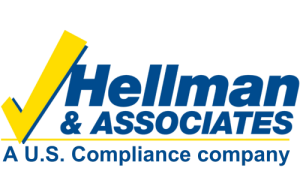Loud noises common in many industries can cause hearing loss by damaging the delicate hair cells in the inner ear. Usually this damage happens gradually when prolonged exposure to loud sounds exhausts these hair cells. As noise levels increase, the tiny cilia at the top of the hair cells can be injured or broken off. These hair cells don’t repair themselves so when enough hair cells are damaged, hearing loss results.
Noise levels are measured in decibels on an A-weighted scale (dBA). A hearing conservation program is required when employees have noise exposures at or above 85 dBA averaged over the work shift, and hearing protection is required to be worn at average exposures of 90 dBA and above. Sound level meters can be used to help companies identify high-noise areas or equipment in the workplace. Once high-noise areas are identified, a noise monitoring device called a dosimeter can be used to measure employees’ average noise exposure.
Who needs hearing protection?
How do you know if you are being exposed to hazardous levels of noise?
- If you have to raise your voice or shout over the noise to be heard by someone an arm’s length away; or
- You can’t hear someone who’s standing 3-feet away.
Warning signs of exposure to hazardous noise are:
- You hear ringing (tinnitus) in your ears immediately after exposure;
- You have difficulty understanding speech after exposure; or
- You can hear people talking but you can’t understand them.
Hearing Conservation Program Requirements
If a hearing conservation program is required based on employee exposure, the following measures must be taken:
- Annual training to ensure all employees understand the hazards and the company’s requirements;
- Annual hearing tests to monitor employees’ hearing and determine if hearing loss is present; and
- The provision of multiple types of hearing protection to employees working in high-noise areas.
Important Considerations
- Always choose the right hearing protection and make sure it’s protective enough. Contact your supervisor or safety representative if you have questions on the type or level of protection to be worn.
- If using ear plugs, use the roll-pull-hold method to fit them correctly:
- Roll the ear plug into a small cylinder using your thumb and forefinger;
- Pull your ear open by using the opposite hand to pull up on the top of the ear; and
- Insert the ear plug and hold it in place until it’s fully expanded.
- Music headphones are typically not rated to protect employees from outside noise and should not be used when hearing protection is required unless specifically designed for that purpose.
- Keep reusable hearing protection clean (such as ear muffs) and do not reuse disposable protection.
- Remember that hearing loss is completely preventable, but it is permanent. Protecting your hearing is critical, both on and off the job.
